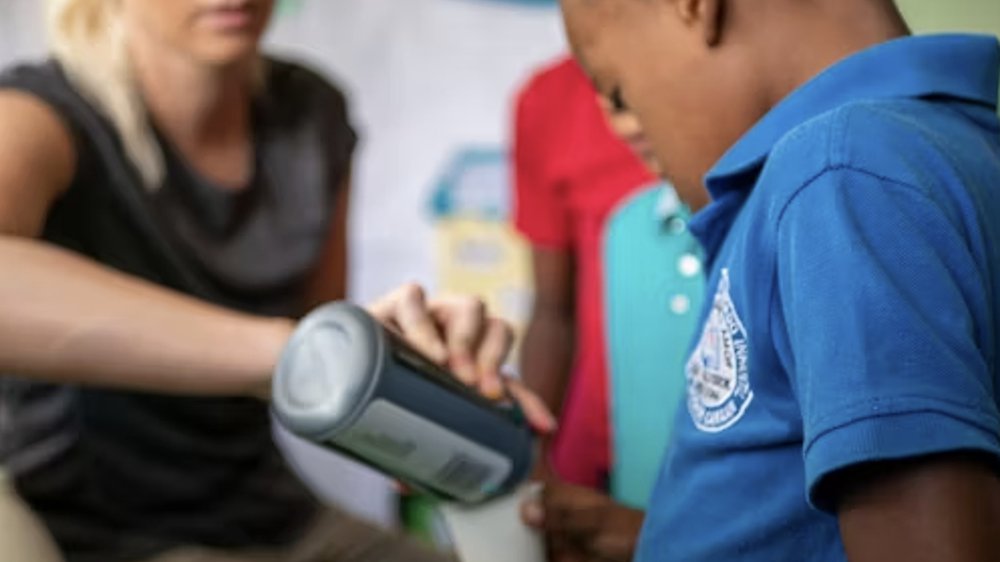Art fosters creativity, self-expression, self-awareness, and many other social and emotional learning (SEL) skills that students need to succeed in life. The art room is a unique place where students tend to make friends with peers they wouldn’t necessarily spend time with elsewhere in school. In art classes, students often share workspaces, materials, and sometimes even the artwork they produce. They learn how to critique themselves and their peers. They support and encourage each other. They learn about some of their own weaknesses and strengths—and how to share those with others.
Here’s how to make the most of the many SEL opportunities your art class offers.
1. Let your room be your guide.
Art rooms tend to be set up for collaboration. They tend to use shared tables for seating, or perhaps four desks pushed together, so students rarely have individual seats. Students may have to share a set of paints or a couple pairs of scissors and a bottle of glue with the whole table. Art students often move around, too, getting up to put a project in the drying rack or to wait their turn to use the sink. Lean into the sharing and collaboration that happens naturally in art classes to help students hone their relationship skills.
2. Encourage students to write about their art.
Years ago, artist statements in primary school classes were rare, but they’ve become much more popular. Ask students to describe their process, or to write about what they were trying to express. Asking students to explain their creative choices in a journal entry is a great way to encourage self-awareness. Asking them to produce a statement that their peers can read might also have the additional benefit of completely changing how their classmates respond to their work.
3. Ask students to provide feedback on each other’s art.
Make sure your students are learning to give and receive criticism by having them respond to one another’s art. When they take turns with a classmate providing feedback in a safe and supportive environment, students learn that there are no mistakes in art class, but rather opportunities to look at their process or finished product differently. That kind of critical thinking will serve them well in life beyond the art room.
The habit of sharing feedback is also inclusive for students with diverse skills. Over time they appreciate that the student who may be strong in watercolors may not have the same skills in ceramics or a student who produces quality line drawings struggles with perspective. It’s an opportunity for every student to see that we all have different strengths and weaknesses—and that’s okay.
4. Create a collaborative art project.
Community art projects are a goldmine of SEL opportunities. A collaborative arts project could be one large project each student contributes to, or many individual projects that you pull together for a group show or event. Here are some fun examples:
● Students could paint the side of a building to help define the community or create displays that showcase their work for parent-teacher night.
● In a project called “Empty Bowls,” students each create a bowl and sell them to raise money for the local homeless shelter, creating a group fundraiser featuring similar individual products.
● We recently saw a collaborative project where students collected bottle caps that they arranged into a mural of Vincent Van Gogh’s “Starry Night.” It’s a project that requires extensive planning, collaboration, and cooperation to pull off, and at the end students produce something the whole school can enjoy. Along the way, they can also learn about how artists from different movements worked together, shared studio space, and critiqued and learned from one another.
● Another great community project we’ve seen is when students create artwork and set up a shoppable gallery where family members can come and buy the students’ creations. All the proceeds go back to fund the art program.
Projects where students each have their own individual piece, such as a community quilt or a tile mosaic, are also strong community builders because everyone has a part. Regardless of their skill level, their vision, or any other differences, they have a piece to add when it all comes together at the end.
5. Involve your entire school community.
For larger art projects, be sure to have clear communication with your administration and students. Lay out a roadmap explaining how you’ll prepare your project in the classroom and move it into, for example, a hallway. Let them know about any community partners or other groups you’re partnering with, and make sure administrators approve any special permissions, such as students needing to leave campus for the project.
Tie your project to other subjects, if possible. An international night, for example, is a great opportunity for students to create artworks that represent different countries. Or work with the science teachers and have students create projects inspired by the different planets in the solar system.
Make sure students know what the final goal is and what steps they will have to complete along the way—and then get them involved in the planning process. Have them brainstorm about what groups in the community might want to help. Ask them to come up with a positive message to leave as their mark on the school.
Getting students involved in the planning is a great way to give them ownership of the project and ensure they have a good time, but it can also be a great way to find resources. Maybe a student has a painter in the family who has a bunch of leftover paint for your mural, for example.
6. Participate in events with outside organizations.
Statewide or national events can be a great way to involve your students in a broader project. Every March, for example, is Youth Art Month, sponsored by the Council for Art Education. Most states hold regional exhibits leading up to a statewide show at the end of the month.
There’s a huge celebration, awards are granted, and the whole community gets involved, including such dignitaries as mayors and other local politicians and celebrities. This sort of public celebration shows students (and school administrators) that the whole community appreciates their art.
When you lean into the collaborative nature of producing and enjoying art, you’ll find that art projects are brimming with opportunities for students to practice all kinds of SEL skills.
About the authors
Mary Reilly is a subject matter expert-art for School Specialty. She received her B.A. with an emphasis in textile design from Mount Mary University in Wisconsin. She studied at the Wetterhoff Institute of Craft and Design in Hämeenlinna, Finland, and took numerous post-graduate courses in fine arts. Mary has over 25 years of experience with Sax Arts & Crafts and School Specialty, developing and shaping a national team of art consultants who have conducted art education and professional development workshops. In her role as Subject Matter Expert she represents the company at art education conferences, professional development and creates artwork and lesson plans. She can be reached at Mary.Reilly@schoolspecialty.com.
Nadine Dresbach is a subject matter expert-art for School Specialty. She received her master’s and undergraduate degrees in art education from Kent State University. She began her teaching career at Canton City Schools and Kent State University in Ohio. In 1995, she was hired by Sax Arts & Crafts as an art consultant and category sales manager representing School Specialty at conferences and professional development sessions. Nadine also creates artwork and lesson plans for the company. She previously served as an instruction and internship supervisor for Winthrop University in Rock Hill, South Carolina, and has also worked for the Rock Hill and Union County School Districts and St. Anne Catholic School. She can be reached at Nadine.Dresbach@schoolspecialty.com.










